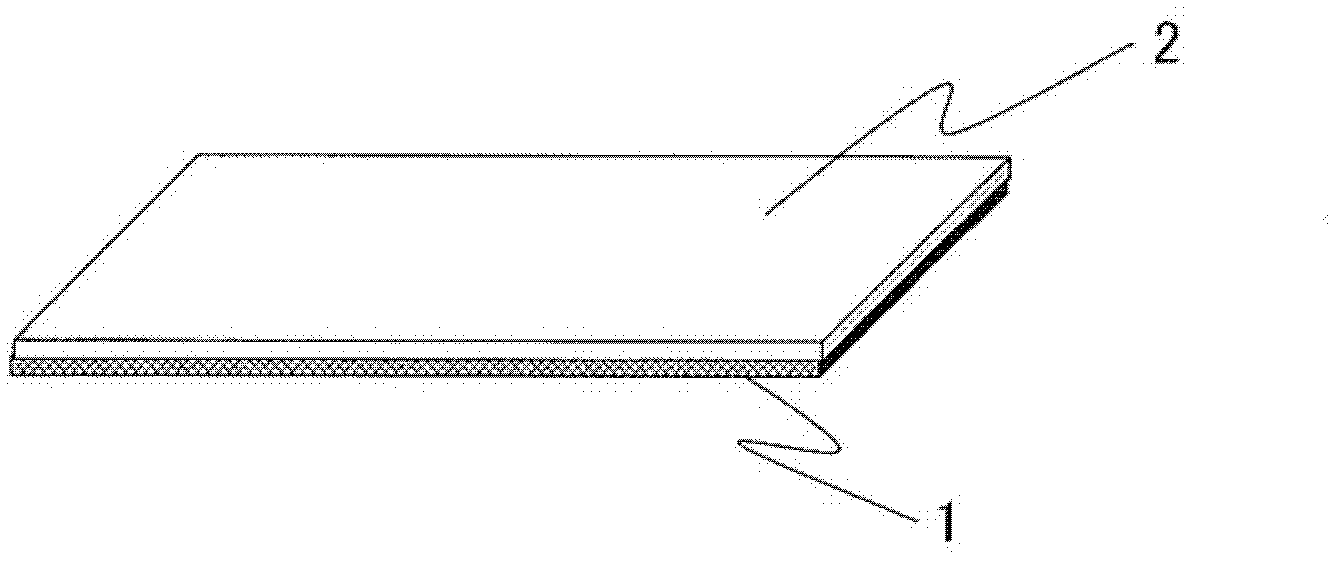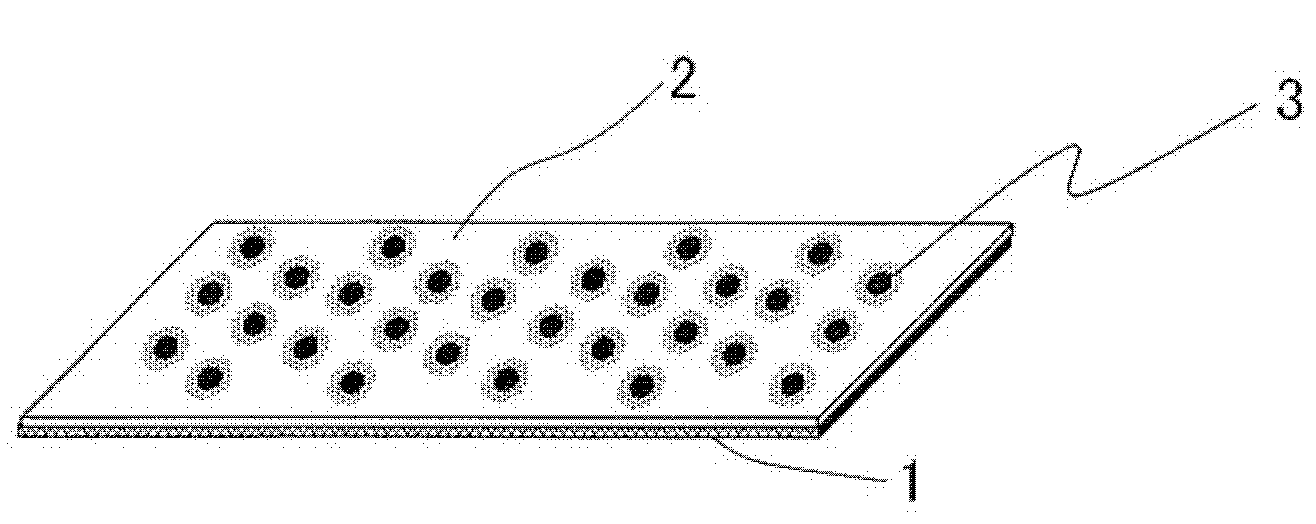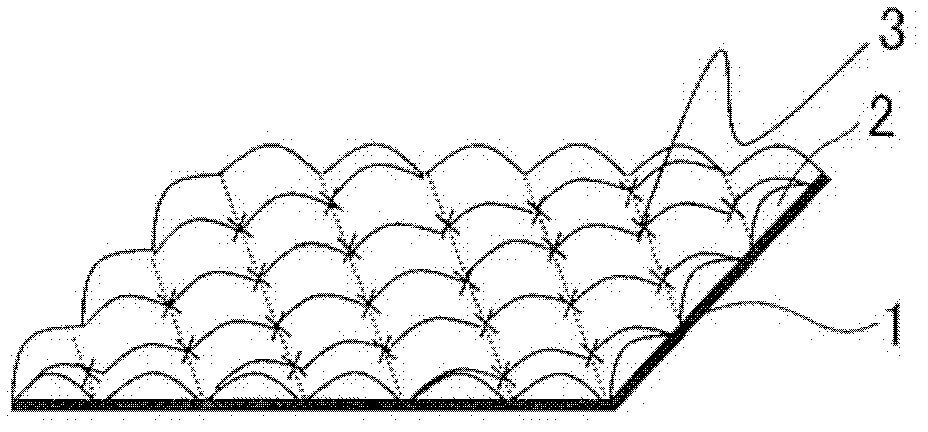Rugged elastic nonwoven fabric and method for manufacturing the same
A manufacturing method and technology of non-woven fabrics, applied in textiles and papermaking, non-woven fabrics, layered products, etc., can solve the problems of stretch resistance, loss of hand feel, low bulkiness of sheets, etc., to prevent shrinkage, excellent Stretchable, uniform texture
- Summary
- Abstract
- Description
- Claims
- Application Information
AI Technical Summary
Problems solved by technology
Method used
Image
Examples
example 1
[0154] Polypropylene with a melting point of 160°C and a melt mass flow rate of 15g / 10min, and an ethylene-propylene copolymer (propylene content of 4% by mass) with a melt mass flow rate of 16g / 10min and a melting point of 130°C, A side-by-side composite fiber (volume ratio: 50 / 50) with a fineness of 2.2 dtex and a fiber length of 51 mm is used as heat-shrinkable fiber (1A), and the weight per unit area is 10 g / m 2 the first fiber layer. In addition, the production unit area weight is 100g / m 2 The same fiber layer, and measure the shrinkage rate, the result is a shrinkage rate of 70%.
[0155] Set the weight per unit area as follows to 10g / m 2 The second fiber layer is superimposed on the first fiber layer, and the second fiber layer is made of polypropylene with a melting point of 160°C and a melt mass flow rate of 15g / 10min, and a melting point of 100°C with a melt mass flow rate of A side-by-side composite fiber (volume ratio: 50 / 50) of 20 g / 10 min of olefin-based elast...
example 2
[0161] Polypropylene comprising a melting point of 160° C. and a melt mass flow rate of 15 g / 10 min, and an ethylene-propylene copolymer having a melt mass flow rate of 16 g / 10 min and a melting point of 130° C. (propylene content 4% by mass), A side-by-side composite fiber (volume ratio: 50 / 50) with a fineness of 2.2dtex and a fiber length of 51mm is used as heat-shrinkable fiber (1A), and the weight per unit area is 20g / m 2 the first fiber layer. In addition, the production unit area weight is 100g / m 2 The same fiber layer, and measure the shrinkage rate, the result is a shrinkage rate of 70%.
[0162] Set the weight per unit area as follows to 10g / m 2 The second fiber layer is superimposed on the first fiber layer, and the second fiber layer is made of polypropylene with a melting point of 160°C and a melt mass flow rate of 15g / 10min, and a melting point of 100°C with a melt mass flow rate of A concentric sheath-core composite fiber (volume ratio: 50 / 50) of 23 g / 10 min o...
PUM
| Property | Measurement | Unit |
|---|---|---|
| temperature | aaaaa | aaaaa |
| softening point | aaaaa | aaaaa |
| melting point | aaaaa | aaaaa |
Abstract
Description
Claims
Application Information
 Login to View More
Login to View More - R&D
- Intellectual Property
- Life Sciences
- Materials
- Tech Scout
- Unparalleled Data Quality
- Higher Quality Content
- 60% Fewer Hallucinations
Browse by: Latest US Patents, China's latest patents, Technical Efficacy Thesaurus, Application Domain, Technology Topic, Popular Technical Reports.
© 2025 PatSnap. All rights reserved.Legal|Privacy policy|Modern Slavery Act Transparency Statement|Sitemap|About US| Contact US: help@patsnap.com



